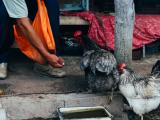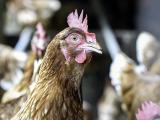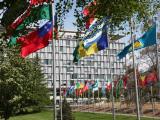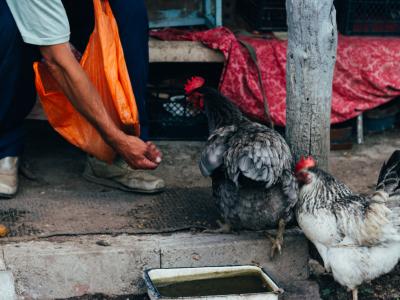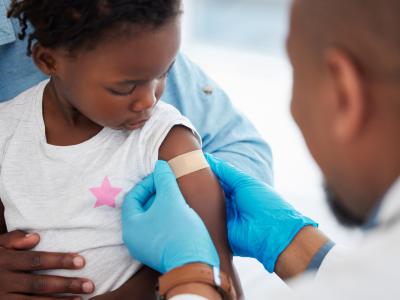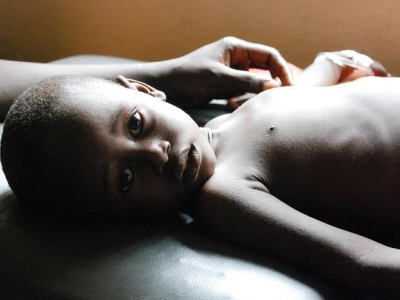Jan 31, 2011
Flu in Moscow triggers week-long school closure
Moscow has closed all of its elementary schools for a week to battle an influenza epidemic described as the worst since 1998, according to an Agence France-Presse (AFP) report published yesterday. The closure was expected to affect close to 500,000 children, according to school officials. One official said half of the students in some classes were home with the flu but that the situation in Moscow was "relatively favorable" compared with some other regions in central Russia. Officials said close to 92,000 Muscovites were suffering from flu or other respiratory infections and that 52,000 of them were children, which was 42% higher than the average of previous years. Week-long school closures also were ordered in the Ural city of Chelyabinsk and in the northern Far East town of Yakutsk, the story said. The shutdown in Moscow was the first of its kind since 1998, the story said.
Jan 30 AFP report
Recombinant flu vaccine looks promising in middle-aged adults
A trivalent flu vaccine using antigens produced in insect cells compared favorably with a standard trivalent vaccine in a test of its immunogenicity and safety in middle-aged adults, echoing results of previous trials in younger and older adults, according to an early online report from Vaccine. The vaccine, made by Protein Sciences Corp., contains recombinant hemagglutinin produced in baculovirus-infected insect cells. In the trial, 601 healthy people between the ages of 50 and 64 were randomly assigned to receive either an egg-based vaccine containing 15 micrograms (mcg) of each of three flu strains or the recombinant vaccine containing 45 mcg of each strain. The trial was conducted during the 2007-08 flu season. The respective seroconversion rates for the standard and recombinant vaccines were as follows: 66% and 72% for seasonal H1N1, 44% and 63% for H3N2 (a significant difference), and 41% and 41% for type B. Antibody responses to the H1 and H3 strains were significantly higher in the recombinant vaccine group, as measured by geometric mean titers, and both vaccines were found to be safe. There were too few cases of confirmed flu infection (11) to assess the vaccines' efficacy, the report says.
Jan 28 Vaccine report
Influenza B muscles out H1N1 in the UK
As flu activity continues its decline in the United Kingdom, influenza B has edged out the 2009 H1N1 virus as the dominant strain, the UK's Health Protection Agency (HPA) said on Jan 27 in its weekly update. The number of doctor's visits for flu-like illness in England continued to drop after peaking during the last week of December. The HPA received reports of 84 more deaths, raising the flu season total to 338. Many of the most recently reported deaths occurred over the past 6 weeks but were just confirmed. About 73% of deaths involved people who had risk factors for flu complications, and most were in people ages 15 to 64.
Jan 27 HPA weekly flu report
Severe H1N1 cases rose sharply in Wisconsin's second pandemic wave
In Wisconsin, the number of hospitalizations increased fourfold and the number of deaths rose fivefold between the first and second waves of the 2009 H1N1 flu pandemic, according to a report in the Journal of Infectious Diseases (JID). In the first wave, from Apr 15 through Aug 30, 2009, there were 252 hospital cases and 9 deaths; during the second wave, from Aug 31, 2009, through Jan 2, 2010, the numbers rose to 1,077 and 46, says the report from the Wisconsin Division of Public Health. The differences in numbers were even more pronounced—tenfold and eightfold increases—outside Milwaukee. Hospitalization rates were highest for racial and ethnic minorities during the first wave, but the rates increased most for non-Hispanic whites and adults in the second wave. In the first wave, 48% of patients were black and 29% were white, but in the later period this changed to 15% black and 68% white. Times to hospital admission and antiviral treatment were shorter in the second wave, "but the overall hospital course remained similar, with no change in hospitalization duration, intensive care unit admission, requirement for mechanical ventilation, or mortality," the report states.
Jan 28 JID report
H5N1 strain ID'd in China points to wild-bird spread
Researchers have found a strain of H5N1 avian flu isolated from a 2009 outbreak in wild birds in China that is novel to the region and indicates spread of the virus via migratory birds, according to a report in Emerging Infectious Diseases. The scientists isolated 11 highly pathogenic H5N1 viruses from 13 birds of three different species (great-crested grebes and two gull species) that were found during an outbreak that killed 273 birds at Qinghai Lake in Qinghai Province, a breeding ground for many bird species. Phylogenic and antigenic analyses revealed that the viruses belonged to clade 2.3.2 and "were closely related and showed 100% homology at the nucleotide level." What's more, the viruses differed from those previously detected at the lake, which had till that point been from clade 2.2, a strain that originated from a 2005 outbreak at the lake, China's largest. Clade 2.3.2 has been reported in Hong Kong and Japan, but the analysis showed that the latest Chinese viruses most closely resembled strains found in great-crested grebes and black-headed gulls in Russia in 2009. Because of this fact and the lack of H5N1 outbreaks in poultry in that region in 2009, the authors conclude, "It is likely that wild birds spread the virus."
Jan 28 Emerg Infect Dis report
